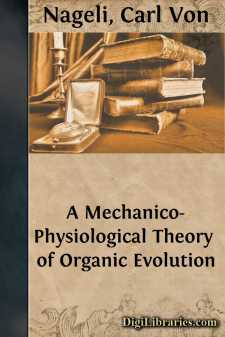Categories
- Antiques & Collectibles 13
- Architecture 36
- Art 48
- Bibles 22
- Biography & Autobiography 813
- Body, Mind & Spirit 142
- Business & Economics 28
- Children's Books 17
- Children's Fiction 14
- Computers 4
- Cooking 94
- Crafts & Hobbies 4
- Drama 346
- Education 46
- Family & Relationships 57
- Fiction 11829
- Games 19
- Gardening 17
- Health & Fitness 34
- History 1377
- House & Home 1
- Humor 147
- Juvenile Fiction 1873
- Juvenile Nonfiction 202
- Language Arts & Disciplines 88
- Law 16
- Literary Collections 686
- Literary Criticism 179
- Mathematics 13
- Medical 41
- Music 40
- Nature 179
- Non-Classifiable 1768
- Performing Arts 7
- Periodicals 1453
- Philosophy 64
- Photography 2
- Poetry 896
- Political Science 203
- Psychology 42
- Reference 154
- Religion 513
- Science 126
- Self-Help 84
- Social Science 81
- Sports & Recreation 34
- Study Aids 3
- Technology & Engineering 59
- Transportation 23
- Travel 463
- True Crime 29
A Mechanico-Physiological Theory of Organic Evolution
by: Carl Von Nageli
Description:
Excerpt
SUMMARY.
In this summary I shall in general pursue a course the reverse of that which my main work follows. I shall proceed from the primitive, unorganized condition of matter and endeavor to show how organized micellar substance has arisen in it, and how, from this micellar substance, organisms with their manifold properties have arisen. Since such a synthesis of organisms out of known forms of matter and force is still far removed from a conclusion strictly in accord with physical law, the process becomes comprehensible and obvious only by exact knowledge of the discussion that has preceded. Although the synthetic method reveals more clearly the weaknesses of the theory than do analytic investigations, yet I considered it helpful to make this presentation in order to give a clearer idea of the mechanico-physiological theory, and at the same time to test its worth.
1. FORMATION OF UNORGANIZED BODIES (CRYSTALS).
When separated and promiscuously moving molecules of any substance in solution or in a melted condition pass into the solid form by reason of removal of the causes of separation and motion (warmth or solvent), they arrange themselves into solid masses impermeable to liquids. These minute bodies grow by accretion, and when molecular forces are permitted to act undisturbed, assume the regular outer form and inner structure of crystals. The number of crystals, their size, changes of form and growth, all depend on external conditions.
2. FORMATION OF LIVING ORGANIZED (MICELLAR) BODIES.
Certain organic compounds, among them albumen, are neither soluble, despite their great affinity for water, nor are they fusible, and hence are produced in the micellar form. These compounds are formed in water, where the molecules that arise immediately adjoining each other arrange themselves into incipient crystals, or micellæ. Only such of the molecules as are formed subsequently and come in contact with a micella contribute to its increase in size, while the others, on account of their insolubility, produce new micellæ. For this reason the micellæ remain so small that they are invisible, even with the microscope.
On account of their great affinity for water the micellæ surround themselves with a thick film of it. The attraction of these micellæ for matter of their own kind is felt outside this film. Hence the micellæ with their films unite themselves into solid masses permeated with water, unless other forces overcome attraction and re-establish a micellar solution (as in albumen, glue, gum), where the slightly moving micellæ show a tendency to cling together in chain-like and other aggregations. Very often there are found, especially in albumen, half liquid modifications intermediate in fluidity between the solid masses and the micellar solution.
The internal and external constitution of micellar bodies depends essentially on the size, form and dynamic nature of their micellæ, since these efficients condition the original arrangement of the micellæ and the insertion in proper order of those formed later....


